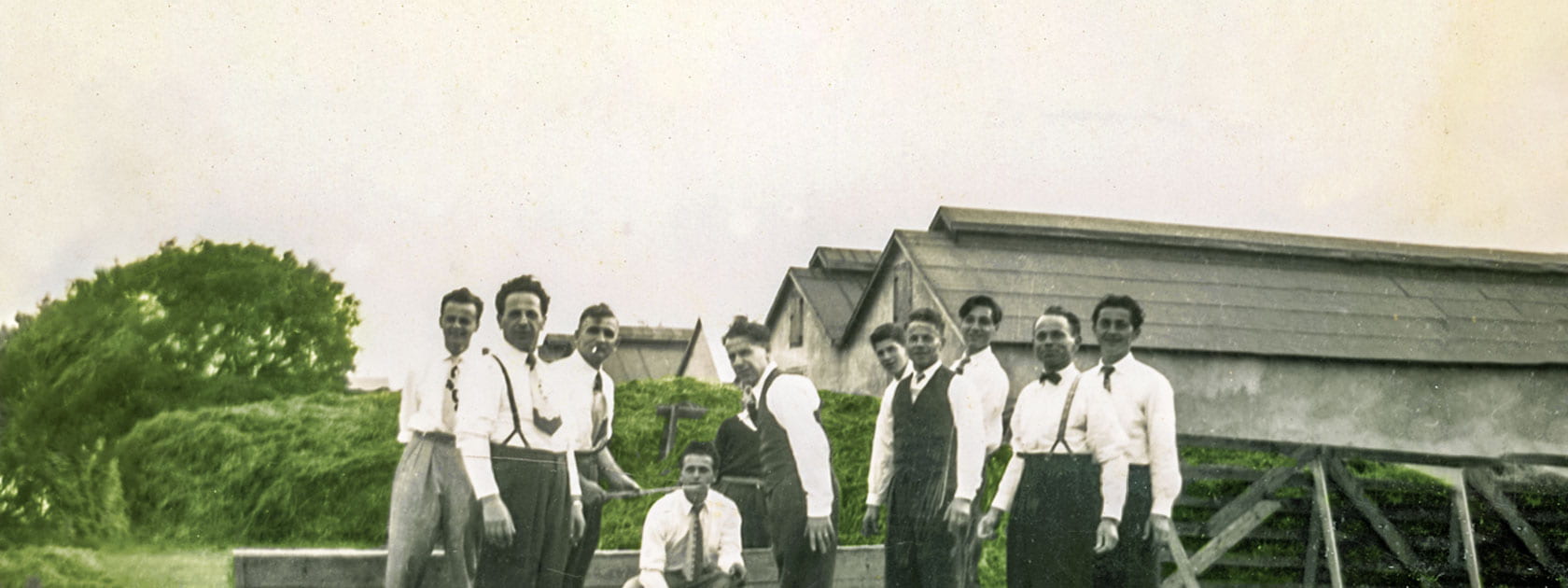Date
November 29, 2011
Maker
Columbus Centre
Accession#
ICEA2011.0080.0001
Interview With Maurice Poggi
Maurice Poggi was born on December 11, 1945 in Montreal, QC. He is the son of artist, Vincenzo Poggi, who was interned during World War II. Vincenzo was born in Milan in 1900 and came to Canada in 1929 to work with Guido Nincheri (also interned), a stained glass artist in Montreal. Maurice’s mother was Janet Poggi (née Armand). She was born in Sudbury in 1912 and moved to Montreal as a child. Janet married Vincenzo in 1944. During World War II, Vincenzo was arrested and taken to Bordeaux Jail before being interned at Camp Petawawa and then Camp Fredericton. Vincenzo was possibly the director of an international press service which was apparently a front for disseminating Italian propaganda. Maurice talks about how this might have been the reason for his father’s internment, but how his father’s character and the types of people that he associated with suggests that he was not a fascist. Maurice finds it very troubling that his father might have been associated with fascists. While interned, Vincenzo painted portraits of various internees and other people at the camps, including officials. He also painted portraits of internees’ children based on photographs. The interview ends with shots of some of Vincenzo’s work that Maurice has around his home as well as an exhibition catalogue with a list of names written on it.
In this opening clip Maurice Poggi introduces himself and speaks about his parents. In particular, he speaks about his father’s formal art training in Italy and his migration to Canada and working with artist Guido Nincheri.
Maurice Poggi briefly describes the work that his father did in Guido Nincheri’s studio.
Maurice Poggi mentions that his father was never involved in any Italian groups in Montreal. However, he does mention some references to his father being involved in an international press service which was a front used to disseminate information about Italy.
In this clip Maurice Poggi talks about where his father lived in Montreal and his father’s impressions of Canada.
Maurice Poggi mentions that his father did not do any work for the Casa d’Italia, but that he recently learned that his father had worked on a fresco in Montreal even though he was trained in stained glass.
Maurice Poggi talks about the memories of the internment period that his father shared with him.
Maurice Poggi speaks about how he knew very little about his father’s internment until his death when he discovered an envelope of drawings and notes from the period. In this clip he talks about his search for answers about his father’s internment.
Maurice Poggi speaks about his father’s reluctance to speak about his internment experience and his own feelings about the information he’s discovered.
Maurice Poggi gives brief information about how long his father was interned and the places he was interned at.
Maurice Poggi talks about how his parents met and their family life in Montreal post-war.
Maurice Poggi talks about his father’s character.
Maurice Poggi speaks about an exhibition catalogue that his father kept that had the names and addresses of a number of internees.
Maurice Poggi talks about his father’s time spent in Guido Nincheri’s studio and both men’s artistic style.
In this clip Maurice Poggi talks about his father’s working life after the war.
In this clip Maurice Poggi speaks about his grandmother and describes how she possibly received assistance from the Red Cross while her son Vincenzo was interned.
In this clip Maurice Poggi discusses how he has learned about his father’s internment experience over the years by reading and looking at archival materials from his father’s collection and other collections across the country.
Maurice Poggi speaks about why he donated the work his father produced in Camp Petawawa to the Canadian War Musuem in Ottawa. He also speaks about his father’s work in stained glass and any pieces of his father’s work that he kept.
This clip shows the painting Vincenzo Poggi created of his future wife Janet in 1940.
A second painting by Vincenzo Poggi is shown in this clip. The painting features a self-portrait of Poggi in the mirror.
In this final clip, Maurice Poggi displays a portrait painted by his father while he was a student in Milan in 1928.



